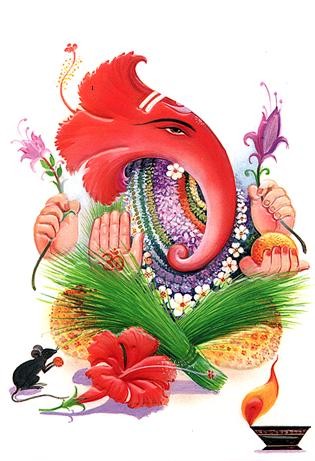Telugu's Cultural Celebration, D.C. Style
By Libby Copeland
Washington Post Staff Writer
Monday, July 9, 2007;
 The Washington Convention Center is not a particularly warm or colorful place, nor is it meant to be. It is a blank slate of glass and marble, designed to mutate according to the needs of its patrons, whether they be veterinarians or Baptists.
The Washington Convention Center is not a particularly warm or colorful place, nor is it meant to be. It is a blank slate of glass and marble, designed to mutate according to the needs of its patrons, whether they be veterinarians or Baptists.Last week the convention center was transformed into southern India. More than 13,000 people who live in North America and speak Telugu, the second most common language in India after Hindi, descended for three days of song and dance, cuisine and speeches in what is sometimes called "Teluglish" -- Telugu with a smattering of English thrown in. For the youth, there were Telugu karaoke and a speed-dating session.
There was a miniature temple on a carpet of flower garlands, and a statue of Ganesh, the elephant-headed Hindu god. There were stars of the Telugu filmmaking industry, known as Tollywood. There were T-shirts for sale that said, "You Know You Are Telugu If . . ." with a list of descriptions like: "When referring to your career, you are either 'in' computers or medicine."
The Telugu Association of North America (TANA), which runs this conference in a different city every two years, puts the number of Telugu people in the United States at 400,000 to 500,000, says Hanumaiah Bandla, a Detroit psychiatrist and outgoing president of TANA. The Telugu people make up the majority of inhabitants of the Indian state of Andhra Pradesh, population 76 million. Raghu Nemani, 35, a Herndon Telugu who works in software, says there are so many Telugus in his field that he has sat in on meetings in the United States conducted in his mother tongue.
"You walk into any of the software companies or IT departments and if you see an Indian face, talk in Telugu," Nemani says. "You'll get a response back."
On Thursday, the first day of TANA's 16th conference, Bill Clinton spoke and held a campaign fundraiser for his wife, Sen. Hillary Rodham Clinton. Friday morning began with speeches that, much like the trains in India, were running behind schedule.
"Indian standard time," explained rising University of Virginia sophomore Thushara Gunda, 19, who was standing in the bathroom in the back of Hall D, waiting with a friend to take the stage for a classical dance performance she predicted would start two hours late. Women passing through to use the facilities kept stopping to admire the two young women. Gunda and her friend wore blue dance costumes and elaborate jeweled headdresses that are complicated to put on.
"It took me an hour this morning, which was pretty sweet, 'cause usually it takes me longer," Gunda said.
It was easy to forget the Washington backdrop. The Wolfgang Puck Express outside Hall D had been transformed into an Indian eatery serving golden fried vada balls with chutney and sambar sauce. Men in shirts and slacks and women in sumptuous saris chatted in knots. Downstairs in another exhibition hall, rows and rows of intricately twisted gold jewelry were for sale, along with piles of folded silks, and condos and villas in Andhra Pradesh's capital, Hyderabad, for those who want investment properties or who plan on returning to the mother country.
As at any conference, there was the party set. On Friday afternoon, a crowd of about 20 teenagers and 20-somethings, many of them born in the States, ditched the convention center to head for a hookah bar. Before leaving, they said the big lure of the TANA conference was the clubbing and the hotel room afterparties. Unlike most of the female conferees, the young women in this crowd wore jeans and short skirts. (Too hot for saris, one said.)
Srilatha Polana, of Leesburg, readied her two daughters, ages 9 and 11, for a dance performance. The younger one would play a woman, the older one a man. Polana and her husband, Ramprasad, watched while an old man arranged their older daughter's pancha -- a strip of fabric that is twisted and folded into a sarong-like garment that men wear on their legs.
"This modern man doesn't know," Polana said, teasing her husband.
Later in the day, a middle-aged, moustached Tollywood star named Nandamuri Balakrishna drew a cheering overflow crowd that threw flower petals on him. A speaker stood on the podium and said, in Telugu, that looking out at the crowd, he couldn't tell if he was in the United States or in India.
Finally, Balakrishna got up and spoke in Telugu. The crowd cheered more. He finished, wiped his face and was surrounded by adoring fans. A 6-year-old girl from East Brunswick, N.J., climbed bravely onto the stage with her Hello Kitty notepad, hoping to get an autograph from the Indian movie star, but the crowd was too thick.
For this moment, Tollywood had come to Washington and Washington felt like home.
Courtesy: WashingtonPost



1 Comments:
nike air huarache
ugg boots
coach outlet online
yeezy boost 350 white
oakley sunglasses
michael kors outlet
ugg outlet
polo ralph lauren
nike outlet
mbt shoes outlet
Post a Comment
<< Home